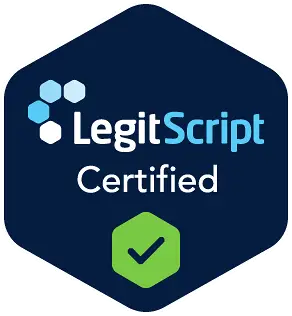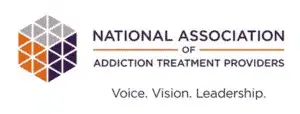If you follow the news, you’ve probably heard about a new drug called Bath Salts. Its effects are scary and have been famously known as the suspected cause of the “Miami cannibal attack,” where a naked man who had ingested the drug was caught attacking a homeless man and biting his face off.
After this news went viral we began to learn about the real and dangerous outcomes of using this drug called Bath Salts. But what are Bath Salts? Where do they come from and how are they used? Are they addictive? We’re answering these questions and more below, about the abuse of Bath Salts.
How Are Bath Salts Abused?
Commonly known as Bath Salts, synthetic cathinones are human-made drugs that are chemically related to cathinone, the stimulant found in khat plants. This shrub can be found in East Africa and southern Arabia and contains the psychoactive chemicals cathinone and cathine. People from these African and Arabian regions of the world have used khat for centuries as a part of cultural tradition for its stimulant-like effects.
Like other drugs, the synthetic variants of cathinones can be much stronger and more dangerous than the natural product. Bath Salts are a part of a new group of drugs called “new psychoactive substances,” by public health officials.
This Season, Give Yourself the Gift of a Fresh Start.
Whether you are struggling with addiction, mental health or both, our expert team is here to guide you every step of the way. Don’t wait— reach out today to take the first step toward taking control of your life.
The National Institute on Drug Abuse defines new psychoactive substances as unregulated, mind-altering substances that are intended to copy the effects of illegal drugs and have become newly available on the market. Bath Salts aren’t to be confused with Epsom salts or other bathing products which contain no mind-altering substances.
Synthetic cathinones are generally seen as a crystal-like powder and are sold in small plastic or foil packages. You can often see them labeled as “plant food,” “jewelry cleaner,” or “phone screen cleaner.” People often purchase them online or in drug paraphernalia stores under many street names including:
- Bath Salts
- Flakka
- Bloom
- Vanilla Sky
- White Lightning
- Cloud Nine
People who abuse these substances swallow, snort, smoke, or inject them. These substances can be very addictive and can cause mental and physical damage. Users have reported that the drugs trigger intense cravings and uncontrollable urges to use the drug. For this reason, when treating Bath Salts addiction, it’s important that users go through medical detox because of the strong withdrawal symptoms.
Signs of Bath Salts Abuse
Synthetic cathinones including bath salts, can produce the following effects when ingested:
- Paranoia – extreme and unreasonable distrust of other people.
- Hallucinations – seeing and experiencing images or sensations that seem real, but are not.
- Sociability – becoming more social in public settings.
- Increased sex drive
- Panic attacks
Signs that a person may be abusing Bath Salts are as follows:
- Aggression and violent behavior
- Confusion
- Delirium
- Anxiety
- Agitation
- Acute psychosis
- Delusions
- Sweating
- Nosebleeds
SAMHSA reports that adolescents and adults with mental illness are at greater risk of abusing drugs and developing an addiction. In an investigation of emergency rooms in Michigan, it was found that 46 percent of those individuals seen with Bath Salts intoxication were people with a history of mental illness.
Side-Effects of Bath Salts
Bath Salts can cause adverse physical effects including:
- Hypertension
- Teeth grinding
- Overactive or overresponsive reflexes
- Vomiting
- Seizures
- Tachycardia (rapid heartbeat)
- Headaches
- Nausea
There is also an elevated risk for hyperthermia and dehydration. Other uncommon side-effects are twitching, chest pain, and other movement disorders.
Why Do People Abuse Bath Salts?
Like any type of addiction, people abuse drugs to escape reality, make them feel comfortable in their own skin, and in some cases, to avoid physical illness. With Bath Salts, it’s nearly impossible to know what psychoactive compounds or fillers were used to make them. Therefore, you really never know what you’re going to get when taking the drug. This may excite some addicted people, but it is an important warning.
The lesson we can take from this is that no drug can be the solution to all of your problems. Drugs, including Bath Salts, can’t change the reality that life has given you or make you feel more confident in your manner of living. Luckily, a pathway to recovery and abstinence from drugs and alcohol can help you get there. Call The Recovery Village at Palmer Lake to learn more about our treatment programs today.







